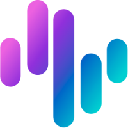-
 Bitcoin
Bitcoin $117800
-3.15% -
 Ethereum
Ethereum $4539
-3.66% -
 XRP
XRP $3.072
-6.08% -
 Tether USDt
Tether USDt $1.000
0.02% -
 BNB
BNB $834.3
-1.03% -
 Solana
Solana $193.1
-2.71% -
 USDC
USDC $0.9997
-0.01% -
 TRON
TRON $0.3583
-0.87% -
 Dogecoin
Dogecoin $0.2233
-8.06% -
 Cardano
Cardano $0.9033
3.60% -
 Chainlink
Chainlink $22.34
-5.78% -
 Hyperliquid
Hyperliquid $44.87
-4.90% -
 Stellar
Stellar $0.4226
-6.29% -
 Sui
Sui $3.765
-5.57% -
 Bitcoin Cash
Bitcoin Cash $588.5
-3.94% -
 Ethena USDe
Ethena USDe $1.001
0.00% -
 Hedera
Hedera $0.2489
-5.54% -
 Avalanche
Avalanche $23.69
-5.77% -
 Litecoin
Litecoin $120.8
-6.90% -
 Toncoin
Toncoin $3.398
-2.63% -
 UNUS SED LEO
UNUS SED LEO $9.276
0.31% -
 Shiba Inu
Shiba Inu $0.00001285
-7.22% -
 Uniswap
Uniswap $10.92
-9.38% -
 Polkadot
Polkadot $3.991
-5.68% -
 OKB
OKB $94.79
-8.25% -
 Dai
Dai $0.9998
0.01% -
 Bitget Token
Bitget Token $4.553
-4.67% -
 Cronos
Cronos $0.1514
-8.71% -
 Ethena
Ethena $0.7243
-7.57% -
 Aave
Aave $310.5
-5.14%
What does the simultaneous narrowing of the upper and lower Bollinger Bands indicate?
A Bollinger Band squeeze signals tightening volatility and potential for a strong breakout, but traders must wait for confirmed price closure beyond the bands to determine direction.
Aug 13, 2025 at 02:43 am

Understanding Bollinger Bands Structure
Bollinger Bands consist of three lines plotted on a price chart: a simple moving average (SMA) in the middle, typically set to 20 periods, and two outer bands that represent standard deviations above and below the SMA. The upper band is calculated as the SMA plus two standard deviations, while the lower band is the SMA minus two standard deviations. The distance between these bands reflects market volatility. When volatility increases, the bands expand outward. When volatility decreases, the bands contract toward the middle SMA. This dynamic nature makes Bollinger Bands a powerful tool for identifying potential shifts in price behavior.
The simultaneous narrowing of both the upper and lower bands signals that the standard deviation of price is decreasing. This contraction means that price movements are becoming more confined within a tighter range. The visual appearance of the bands squeezing together is often referred to as a "Bollinger Band squeeze." This phenomenon does not indicate direction but rather a compression of price action, which historically precedes periods of heightened volatility.
What Triggers a Band Squeeze?
A narrowing of the Bollinger Bands occurs when price volatility drops significantly over a sustained period. This can happen during sideways market phases, consolidation patterns, or low-volume trading sessions. During such periods, buyers and sellers are in relative equilibrium, and no strong directional momentum is present. The reduction in price fluctuations causes the standard deviation to shrink, pulling the upper and lower bands closer to the 20-period SMA.
Several factors can contribute to this contraction:
- Low trading volume, which reduces the intensity of price swings.
- Market indecision, where participants are waiting for macroeconomic data, earnings reports, or regulatory news.
- Range-bound price action, where support and resistance levels hold firm over multiple sessions.
The tighter the bands become, the greater the potential for a sharp breakout once equilibrium is disrupted. The squeeze itself does not predict the breakout direction—only that a significant move may be imminent.
Interpreting the Squeeze in Real-Time Charts
To identify a simultaneous narrowing, traders should observe the distance between the upper and lower bands over time. This can be done manually by comparing band width across candlesticks or by using the Bollinger Band Width (BBW) indicator, which quantifies the spread between the bands. A declining BBW line confirms the squeeze is occurring.
To apply this in practice:
- Open a price chart with Bollinger Bands enabled (default settings: 20-period SMA, 2 standard deviations).
- Watch for a visible contraction where the bands move closer together over 5 to 15 candles.
- Confirm the trend using the BBW indicator—look for a downward slope in its values.
- Overlay volume indicators to check if declining volatility coincides with reduced trading activity.
When the bands reach their narrowest point, the market is coiling. This state suggests that accumulated energy may be released in a strong directional move once a catalyst emerges.
How to Trade the Breakout After the Squeeze
Once the bands have narrowed significantly, the focus shifts to detecting the breakout. The key is to avoid premature entries before confirmation. A valid breakout occurs when the price closes decisively outside either the upper or lower band.
To trade this setup:
- Place a buy stop order slightly above the upper Bollinger Band to catch upside breakouts.
- Place a sell stop order slightly below the lower Bollinger Band to capture downside breakouts.
- Use a tight stop-loss just beyond the opposite band or recent swing point.
- Confirm momentum with volume spikes or candlestick patterns like bullish engulfing or bearish engulfing.
For example, if the price has been consolidating and suddenly closes above the upper band on high volume, it signals strong buying pressure. Conversely, a close below the lower band with expanding volume indicates selling dominance. The initial target can be estimated by measuring the width of the previous consolidation range and projecting it from the breakout point.
Common Misinterpretations and Risk Management
One common mistake is assuming that a narrow Bollinger Band configuration predicts the direction of the next move. It does not. Traders who anticipate a bullish breakout without confirmation may face losses if the price breaks down instead. Similarly, shorting a squeeze without confirmation risks catching a falling knife if the move turns upward.
To mitigate risk:
- Avoid entering positions solely based on band contraction.
- Wait for a confirmed close beyond a band before acting.
- Use additional filters such as relative strength index (RSI) or moving average convergence divergence (MACD) to assess momentum.
- Adjust position size to account for the uncertainty during the squeeze phase.
False breakouts are common during low-volume periods. A price may briefly pierce a band but quickly reverse, trapping traders who entered on the initial move. This reinforces the need for confirmation through candlestick closes and volume analysis.
Historical Examples in Cryptocurrency Markets
In Bitcoin’s 2023 price action, a notable Bollinger Band squeeze occurred between May and June when BTC traded between $25,000 and $27,000 for over three weeks. The bands gradually narrowed, and the BBW reached a six-month low. On June 21, price broke above the upper band on a surge in volume, triggered by positive regulatory news, and rallied to $31,000 within ten days.
Another instance occurred with Ethereum in early 2024. After the ETF announcement buzz faded, ETH entered a tight range between $2,800 and $3,000. The Bollinger Bands compressed significantly over 12 days. A breakdown below the lower band on increasing sell volume preceded a drop to $2,500, illustrating that the squeeze can lead to downside momentum just as powerfully as upside.
These cases emphasize that the squeeze is neutral—its value lies in signaling increased probability of a strong move, not its direction.
Frequently Asked Questions
What timeframes are best for observing Bollinger Band squeezes in crypto?
The 4-hour and daily charts are most effective for identifying reliable squeezes. Shorter timeframes like 5-minute charts produce frequent but often false signals due to noise. Higher timeframes filter out volatility and provide stronger breakout validity.
Can Bollinger Band width be used as a standalone indicator?
No. While BBW identifies contraction phases, it lacks directional insight. It should be combined with volume analysis, price action, and momentum oscillators to improve accuracy.
Does a narrow Bollinger Band always lead to a breakout?
Not always. Some squeezes resolve with continued consolidation. A breakout is only confirmed when price closes beyond a band with supporting volume.
How do I adjust Bollinger Band settings for different cryptocurrencies?
The default 20-period, 2-standard deviation setting works well for major coins like BTC and ETH. For more volatile altcoins, consider using a 50-period SMA with 2.5 deviations to reduce false signals. Test adjustments in a demo environment before live trading.
Disclaimer:info@kdj.com
The information provided is not trading advice. kdj.com does not assume any responsibility for any investments made based on the information provided in this article. Cryptocurrencies are highly volatile and it is highly recommended that you invest with caution after thorough research!
If you believe that the content used on this website infringes your copyright, please contact us immediately (info@kdj.com) and we will delete it promptly.
- Kazakhstan's Crypto Leap: Bitcoin ETF and Central Asia's Digital Finance Future
- 2025-08-13 12:45:19
- BlockDAG Presale Blazes Past $371M: Fundraising Frenzy Fuels Crypto Sensation
- 2025-08-13 13:05:21
- Meme Coins: Chasing the 2025 Surge – Which Will Moonshot?
- 2025-08-13 10:25:23
- Bitcoin's Wild Ride: Rally, Pullback, and What's Next
- 2025-08-13 10:25:23
- Bitcoin, Bitmax, and Institutional Demand: A New Era of Crypto Investment
- 2025-08-13 10:45:12
- Solana, ROAM, and Airdrops: What's the Buzz in 2025?
- 2025-08-13 11:35:13
Related knowledge

What does it mean when the +DI and -DI cross frequently in the DMI indicator but the ADX is flattening?
Aug 11,2025 at 03:15am
Understanding the DMI Indicator ComponentsThe Directional Movement Index (DMI) is a technical analysis tool composed of three lines: the +DI (Positive...

What does the sudden appearance of a "dark cloud cover" candlestick pattern during an uptrend indicate?
Aug 13,2025 at 11:35am
Understanding the 'Dark Cloud Cover' Candlestick PatternThe dark cloud cover is a bearish reversal pattern in technical analysis that typically appear...

What does it mean when the moving average, MACD, and RSI all send buy signals simultaneously?
Aug 11,2025 at 01:42pm
Understanding the Convergence of Technical IndicatorsWhen the moving average, MACD, and RSI all generate buy signals at the same time, traders interpr...

What does it mean when both the KDJ indicator and the RSI show overbought signals simultaneously?
Aug 13,2025 at 11:35am
Understanding the KDJ Indicator in Cryptocurrency TradingThe KDJ indicator is a momentum oscillator derived from the Stochastic Oscillator, widely use...

What does it mean when the price is trading above the SAR indicator but the red dots are densely packed?
Aug 09,2025 at 11:49pm
Understanding the SAR Indicator and Its Visual SignalsThe SAR (Parabolic Stop and Reverse) indicator is a technical analysis tool used primarily to de...

What does it mean when the candlestick chart forms a "Morning Star" but trading volume is sluggish?
Aug 12,2025 at 06:28pm
Understanding the Morning Star Candlestick PatternThe Morning Star is a three-candle bullish reversal pattern commonly observed in cryptocurrency pric...

What does it mean when the +DI and -DI cross frequently in the DMI indicator but the ADX is flattening?
Aug 11,2025 at 03:15am
Understanding the DMI Indicator ComponentsThe Directional Movement Index (DMI) is a technical analysis tool composed of three lines: the +DI (Positive...

What does the sudden appearance of a "dark cloud cover" candlestick pattern during an uptrend indicate?
Aug 13,2025 at 11:35am
Understanding the 'Dark Cloud Cover' Candlestick PatternThe dark cloud cover is a bearish reversal pattern in technical analysis that typically appear...

What does it mean when the moving average, MACD, and RSI all send buy signals simultaneously?
Aug 11,2025 at 01:42pm
Understanding the Convergence of Technical IndicatorsWhen the moving average, MACD, and RSI all generate buy signals at the same time, traders interpr...

What does it mean when both the KDJ indicator and the RSI show overbought signals simultaneously?
Aug 13,2025 at 11:35am
Understanding the KDJ Indicator in Cryptocurrency TradingThe KDJ indicator is a momentum oscillator derived from the Stochastic Oscillator, widely use...

What does it mean when the price is trading above the SAR indicator but the red dots are densely packed?
Aug 09,2025 at 11:49pm
Understanding the SAR Indicator and Its Visual SignalsThe SAR (Parabolic Stop and Reverse) indicator is a technical analysis tool used primarily to de...

What does it mean when the candlestick chart forms a "Morning Star" but trading volume is sluggish?
Aug 12,2025 at 06:28pm
Understanding the Morning Star Candlestick PatternThe Morning Star is a three-candle bullish reversal pattern commonly observed in cryptocurrency pric...
See all articles

























































































